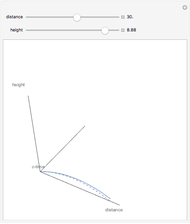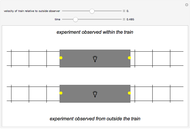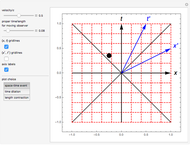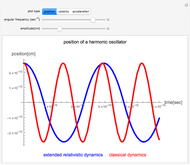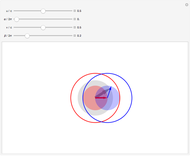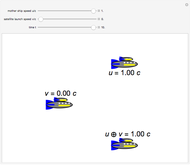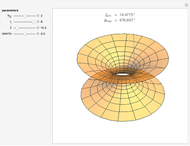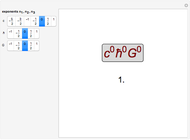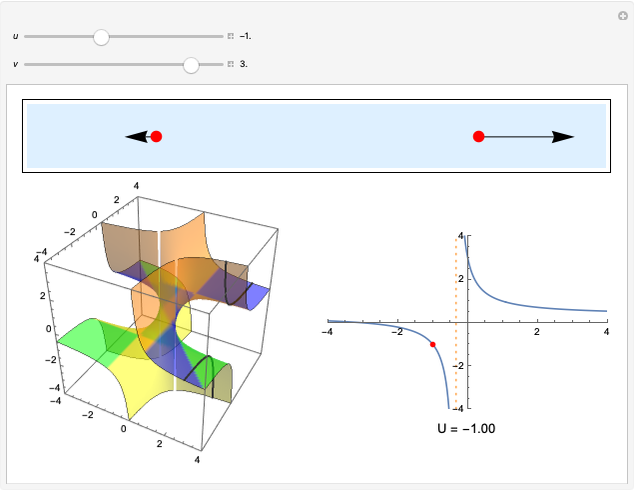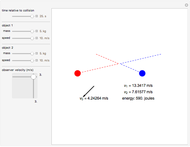Elastic Collisions in Galilean Relativity

Requires a Wolfram Notebook System
Interact on desktop, mobile and cloud with the free Wolfram Player or other Wolfram Language products.
According to the principle of relativity, observers in inertial frames, moving at constant velocities relative to a fixed frame of reference, will experience the same laws of physics, although with different values of observables. In this Demonstration, we consider an observer moving at velocity  relative to the center of mass of two particles undergoing an elastic collision. Different observers will disagree on the magnitudes of momenta and kinetic energy of the system, but they both will agree on the conservation of momentum and energy.
relative to the center of mass of two particles undergoing an elastic collision. Different observers will disagree on the magnitudes of momenta and kinetic energy of the system, but they both will agree on the conservation of momentum and energy.
Contributed by: Joseph Geipel (June 2016)
Open content licensed under CC BY-NC-SA
Snapshots
Details
The momentum of an object is a vector quantity defined as  for the object's mass
for the object's mass  and vector velocity
and vector velocity  . The kinetic energy of an object is a scalar quantity defined as
. The kinetic energy of an object is a scalar quantity defined as  , where
, where  is the speed. Both of these values, although they might vary from observer to observer, are seen as conserved in an elastic collision. Note that if other forces such as gravity or electromagnetism were acting on the system, the kinetic energy by itself would not be conserved, but, rather, the total energy of the system.
is the speed. Both of these values, although they might vary from observer to observer, are seen as conserved in an elastic collision. Note that if other forces such as gravity or electromagnetism were acting on the system, the kinetic energy by itself would not be conserved, but, rather, the total energy of the system.
Permanent Citation













